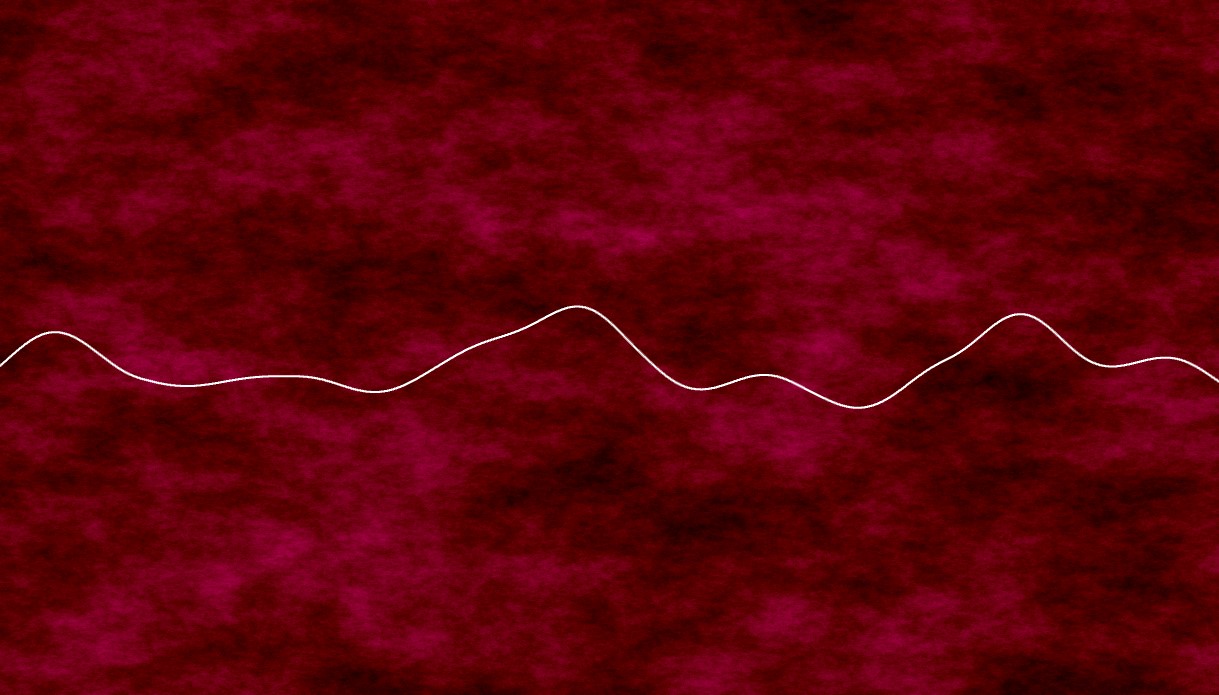Projects
This is a compendium of my projects and creations from my years as a web devloper.
Enjoy!
UB Hackathon
This project was created for UB hackathon 2021.
ChanceMe AI takes in all key indicators of your academic performance as well as the colleges you are interested in applying to, and produces a realistic result of your likelihood of acceptance. More precisely, it takes in numerical scores and analyzes the r/chanceme subreddit to judge the appeal of your extracurricular activities. It processes this data and returns a final percentage score of your likelihood of acceptance. Rating extracurricular activities is possible through a natural language processing model that computes a numerical sentiment value for a particular phrase.
Click here to view the source code. Click here to visit the devpost page.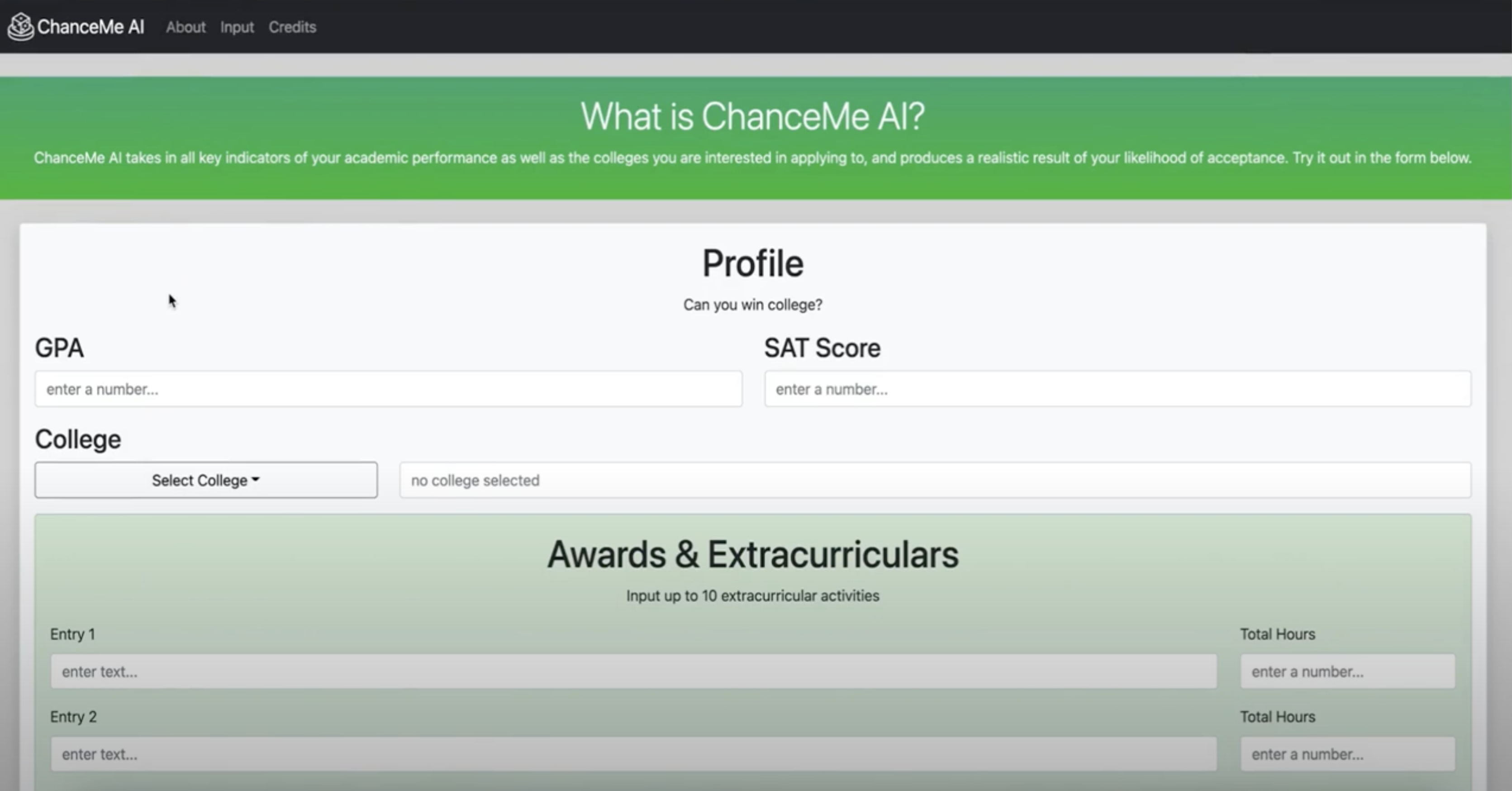
Genetic Evolution of a Species
This program simulates the process of natural selection in a simplified environment. Agents compete against each other for food in order to survive and reproduce. They can mutate and evolve their speed, turning strength, and view range in order to adapt. The simulation demonstrates that over time, in a competitive environment, the overall fitness of the agents increases.
Click here to view the source code. Click here to see a demo.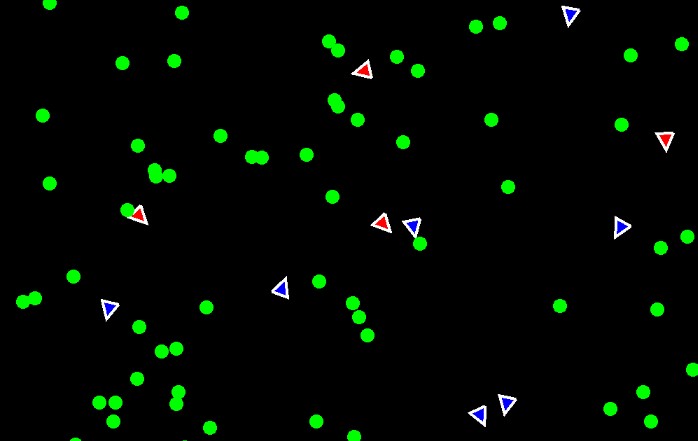
WIP Javascript Physics Engine
This is a WIP physics engine writen in javascript to be used in future projects.
Click here to view the source code.Blackjack
This is a super simple javascript implementation of blackjack, the playing card gambling game.
Click here to view the source code. Click here to see a demo.Complex Evolution Simulation
A more complex simulation of evolution. In this simulation, agents are made of different structural parts that determine the function of the agents. The agents compete against each other in a battle royale-esque arena where the victors are used for reproduction (similar to a genetic algorithm). The DNA sequences of the bots determine their structure (similar to how amino acid sequences determine protein structure) and are crossed over/mutated during reproduction to allow the gradual evolution of the bots over time.
Click here to view the source code.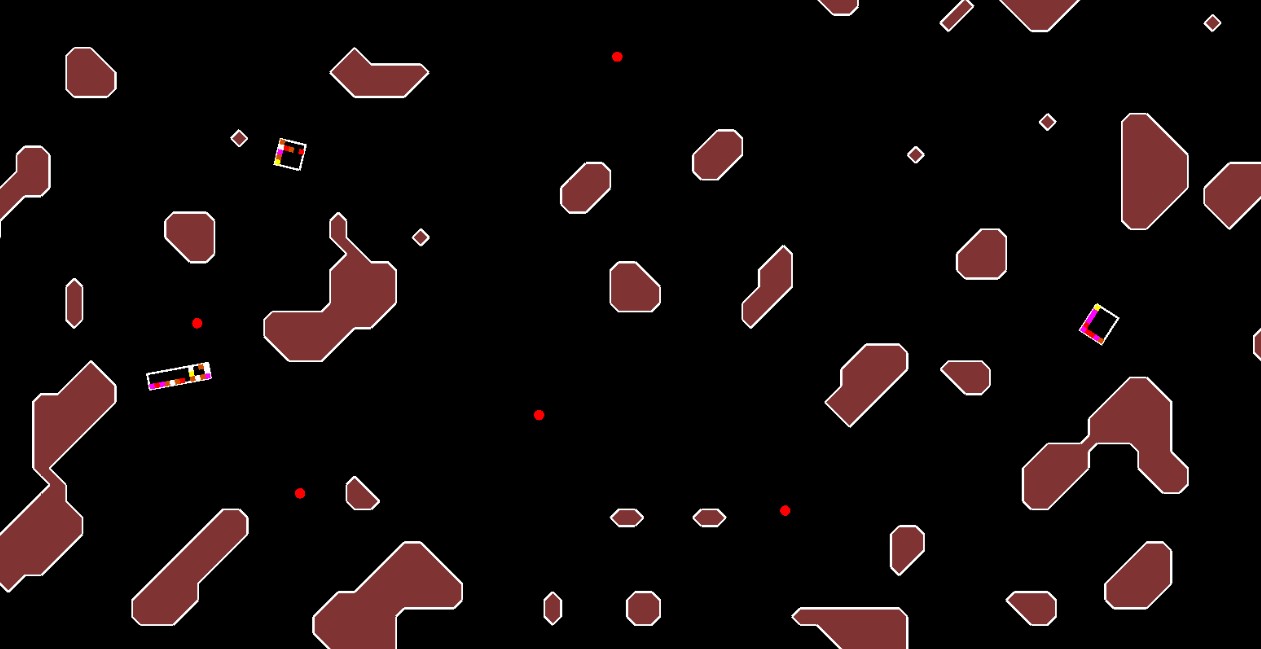
Marching Squares Perlin Noise Map 2D
This project is a 2D map rendered with the Marching Squares Algorithm. It uses a 2D noise map and flood-fill algorithms to create caverns.
Click here to view the source code. Click here to see a demo.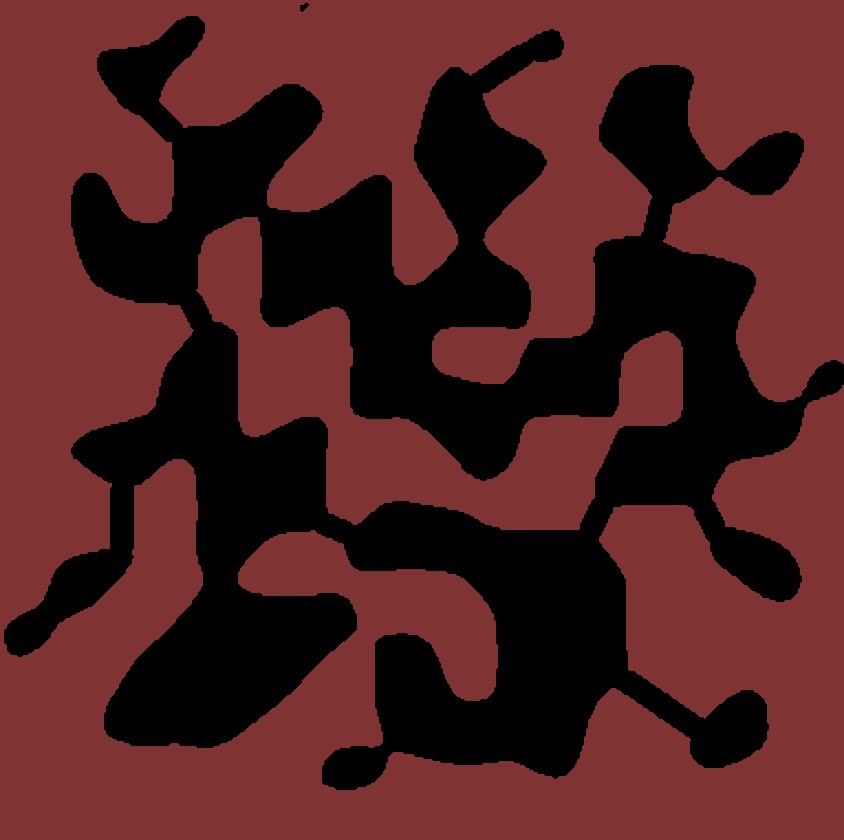
Viral Spread in a Metropolitan Area
An extremely simplified simulation of how a virus could spread in a metropolitan area. Agents follow a day-night cycle schedule and roam from location to location during the day before returning home. The program graphs the spread of the virus over time to see how different factors such as infectivity or fatality affect the spread. In response to the Covid-19 pandemic.
Click here to view the source code. Click here to see a demo.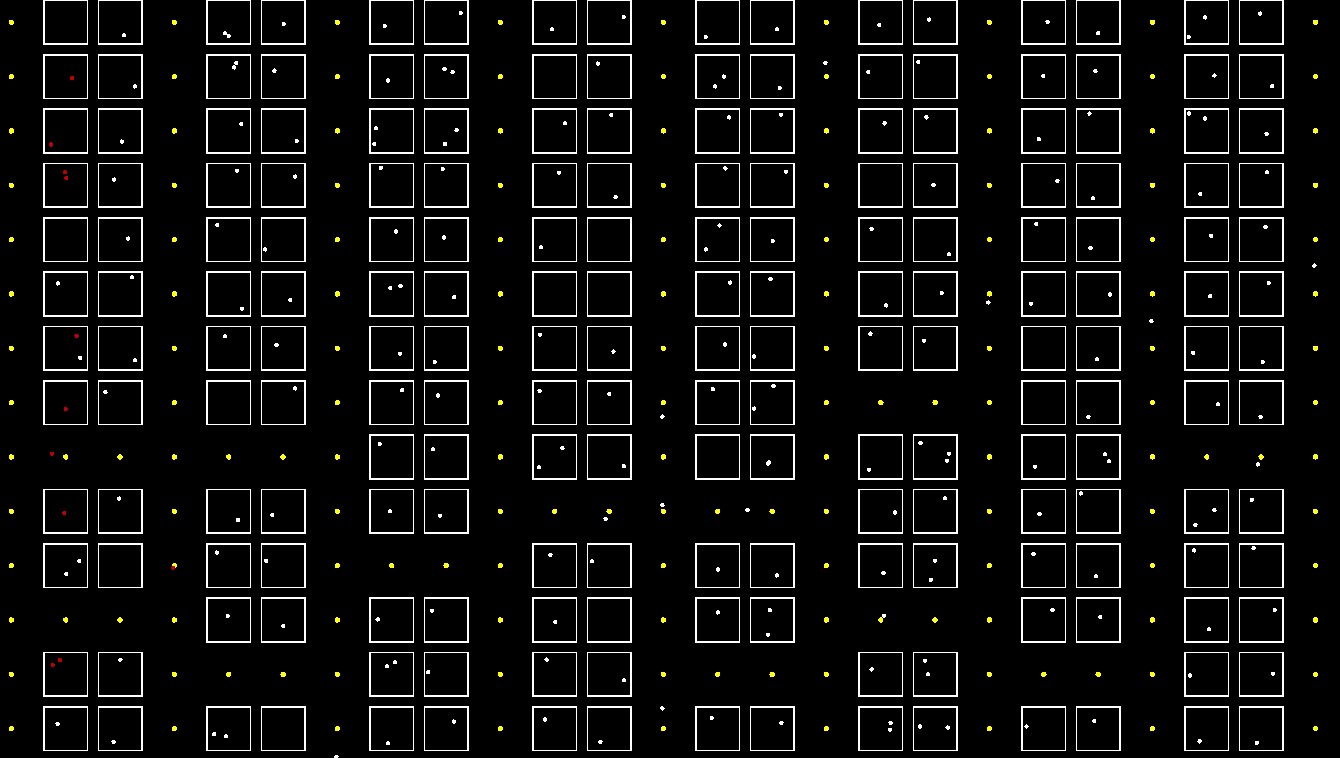
Marching Squares Terrain
A 2D endless terrain map using Marching Squares and 1D perlin noise.
Click here to view the source code. Click here to see a demo.
Voronoi Diagram Generator
A visualization of Voronoi diagrams in different metric spaces. The program calculates the distance of a pixel to each of the nodes making up the Voronoi diagram using a chosen distance metric. Euclidean distance is the direct length of a line segment between two points. Manhattan distance is the sum of the absolute difference of the cartesian coordinates of two points. Minkowski distance is the distance between two points in the normed vector space.
Click here to view the source code. Click here to see a demo.
Simplex Noise Shader
An animated visualization of simplex noise in 1D and 2D.
Click here to view the source code. Click here to see a demo.